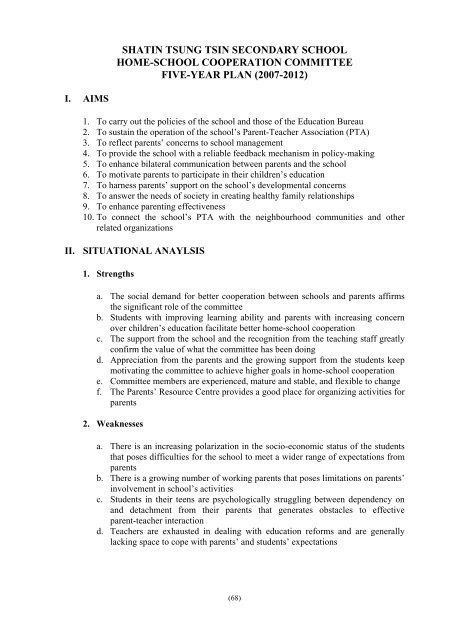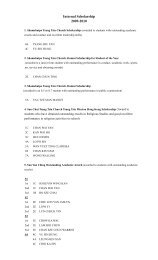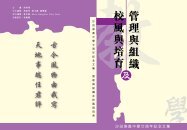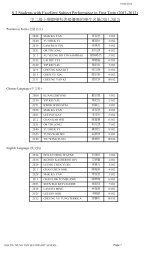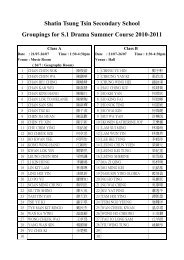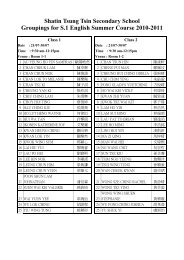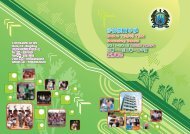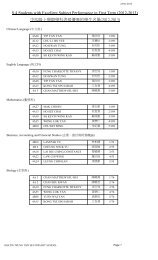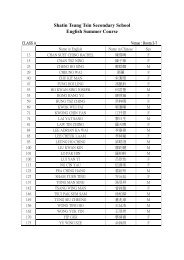2010-2011
2009-2010 - Shatin Tsung Tsin Secondary School
2009-2010 - Shatin Tsung Tsin Secondary School
- No tags were found...
Create successful ePaper yourself
Turn your PDF publications into a flip-book with our unique Google optimized e-Paper software.
SHATIN TSUNG TSIN SECONDARY SCHOOL<br />
HOME-SCHOOL COOPERATION COMMITTEE<br />
FIVE-YEAR PLAN (2007-2012)<br />
I. AIMS<br />
1. To carry out the policies of the school and those of the Education Bureau<br />
2. To sustain the operation of the school’s Parent-Teacher Association (PTA)<br />
3. To reflect parents’ concerns to school management<br />
4. To provide the school with a reliable feedback mechanism in policy-making<br />
5. To enhance bilateral communication between parents and the school<br />
6. To motivate parents to participate in their children’s education<br />
7. To harness parents’ support on the school’s developmental concerns<br />
8. To answer the needs of society in creating healthy family relationships<br />
9. To enhance parenting effectiveness<br />
10. To connect the school’s PTA with the neighbourhood communities and other<br />
related organizations<br />
II. SITUATIONAL ANAYLSIS<br />
1. Strengths<br />
a. The social demand for better cooperation between schools and parents affirms<br />
the significant role of the committee<br />
b. Students with improving learning ability and parents with increasing concern<br />
over children’s education facilitate better home-school cooperation<br />
c. The support from the school and the recognition from the teaching staff greatly<br />
confirm the value of what the committee has been doing<br />
d. Appreciation from the parents and the growing support from the students keep<br />
motivating the committee to achieve higher goals in home-school cooperation<br />
e. Committee members are experienced, mature and stable, and flexible to change<br />
f. The Parents’ Resource Centre provides a good place for organizing activities for<br />
parents<br />
2. Weaknesses<br />
a. There is an increasing polarization in the socio-economic status of the students<br />
that poses difficulties for the school to meet a wider range of expectations from<br />
parents<br />
b. There is a growing number of working parents that poses limitations on parents’<br />
involvement in school’s activities<br />
c. Students in their teens are psychologically struggling between dependency on<br />
and detachment from their parents that generates obstacles to effective<br />
parent-teacher interaction<br />
d. Teachers are exhausted in dealing with education reforms and are generally<br />
lacking space to cope with parents’ and students’ expectations<br />
(68)


